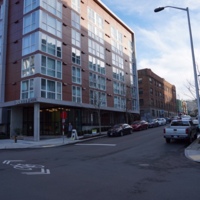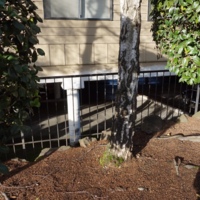Site Report 4
For my block, which is entirely residential currently, the City of Seattle DPD’s “U-District Urban Design Framework” Memo is most relevant in terms of discussing where the block is headed in the years to come. In the document, the City of Seattle collaborated with Heartland Real Estate, a Seattle realty firm, to gain a market perspective on future planning for the District. In the research, the City notes that “rents are currently still too low to justify high-rise construction” (1), but that high-rise development will be “feasible” by 2021, as the opening of the new LINK station will ostensibly result in a rise in property values and rent prices. The document conveys that “current rents would need to rise from about $2.20-$2.50 per square foot per month…to around $3.00 per square foot per month in order for high-rise development to be financially feasible” (Appendix 1). In its utilization of the opinions of a real estate firm and property owners, both of which have profit as their final end goal, this document formulates a market ethic, a belief that what will generate profit should be done.
The “U District Urban Design: Final Recommendations” document, meanwhile, provides a much more community-oriented perspective on how the neighborhood should plan to develop in the coming years. In it, the document specifies a recommendation for denser housing, while also demanding “Mandatory Housing Affordability,” which requires that developers “contribute to affordable housing as part of new development” (20). According to this document, the “Core” of the University District, which this document delineates as between 50th to 41st and between the Ave and Roosevelt, is considered as appropriate for high-rise development because, once the LINK Station opens, it will be just an 8-minute ride from downtown and the “demand for housing in the core will be even higher in the future than it is today” (26).
These two planning documents are quite interesting when juxtaposed with one another because they display the two possibilities that development in the U-District will take in the coming years, either development based on the possibility and maximization of profit or development based on the need of the community. In the first planning document, the city is clearly planning for maximization of profit, a vision that is distinctly not student-oriented. Meanwhile, in the second document, the community is rejecting the market ethic that property owners and real estate companies wish to follow, instead demanding that the community, especially the most vulnerable in the community, be recognized as stakeholders. Ultimately, these documents represent two radically different attempts to manage and plan for the reality of rapidly expanding Seattle, thanks to technological innovations and growth of multinational corporations within the city. Both acknowledge that Seattle is rapidly becoming a global, 21st century city: companies like Amazon, Google, Tableau have become bolsters of our urban economy and are rapidly bringing in new populations and wealth. Whereas the first document details a plan for the U-District to utilize the LINK expansion in order to become an ideal living destination for these growing tech worker populations, the second acknowledges that this would dispossess a community already living here, and that these populations must be kept in mind despite the flux of wealth and capital from the tech boom.These competing visions are not unique to the University District, or even Seattle, for that matter. Just as in Rio de Janeiro or San Francisco or Mumbai experience severe economic inequality within a rapidly growing urbanity, so does Seattle, revealing that the tensions and competing narratives for the city’s future are not particular to our city, but representative of larger, global struggles within a technologically and economically transforming world. The juxtaposition of skyscrapers and poverty that one might see in Downtown Seattle, or the rapidly developing Capitol Hill or South Lake Union neighborhoods, can be seen in many cities across the globe. Mumbai, a dramatic example, but an example nonetheless, simultaneously is residence to the world's most expensive home and to 6 million people living in what is deemed "slum" (Watkins). Thus, this phenomenon of rapid urban development that is inscribed with deep inequality is, right now, one of global proportions. As skyscrapers and corporate campuses continue to pop up, as neighborhoods gentrify and populations are dispossessed of land and resources, it is imperative that citizens remain critical, and pose the question: who does this city serve? Demanding affordable or fully-subsidized public housing, free public transit, and access to healthcare are just a few of the manners by which we can keep the city equitable and liveable.

View of the modern, chic Identity Apartment building with the older Levere Apartments in the background. Taken by Author. January 21, 2017

One of the utilizations of space on Block 22 is parking. In such an example, space functions to generate capital for property owners by consumers paying rent at a market rate. Here is a sign displaying that there are spaces for rent. Photo taken by author. January 21, 2017

Though space is so very limited in the U-District, there is an empty parking garage underneath one of the block's apartment buildings. This displays how car-based even a cramped, urban neighborhood like the U-District has become in this car age. It also complicates the notion of a market determining how space ought to be used, given that there is such a shortage of space in the U-District and that, when left to the market, space is not being utilized. Taken by author. January 21, 2017.
Works Cited
